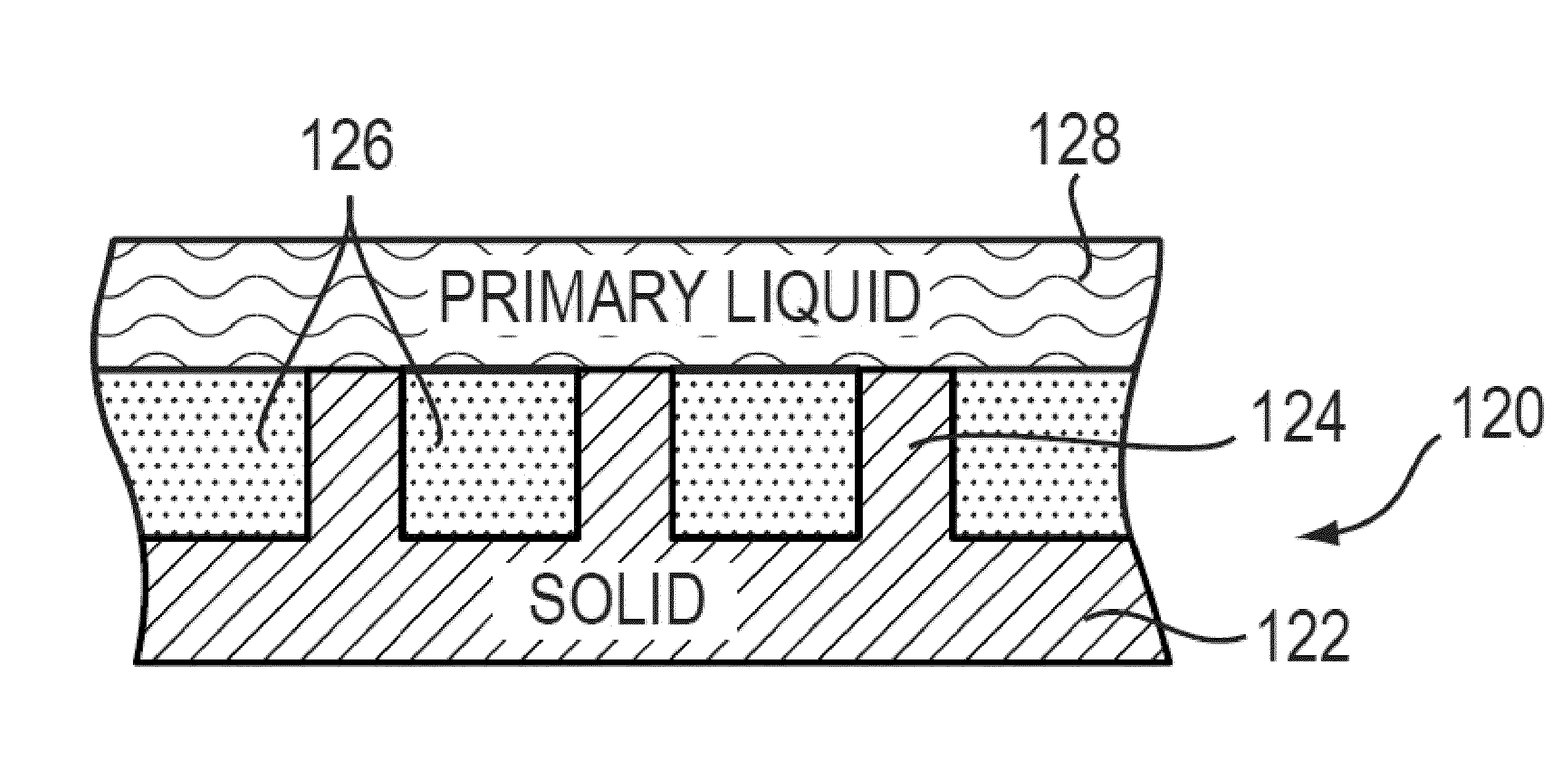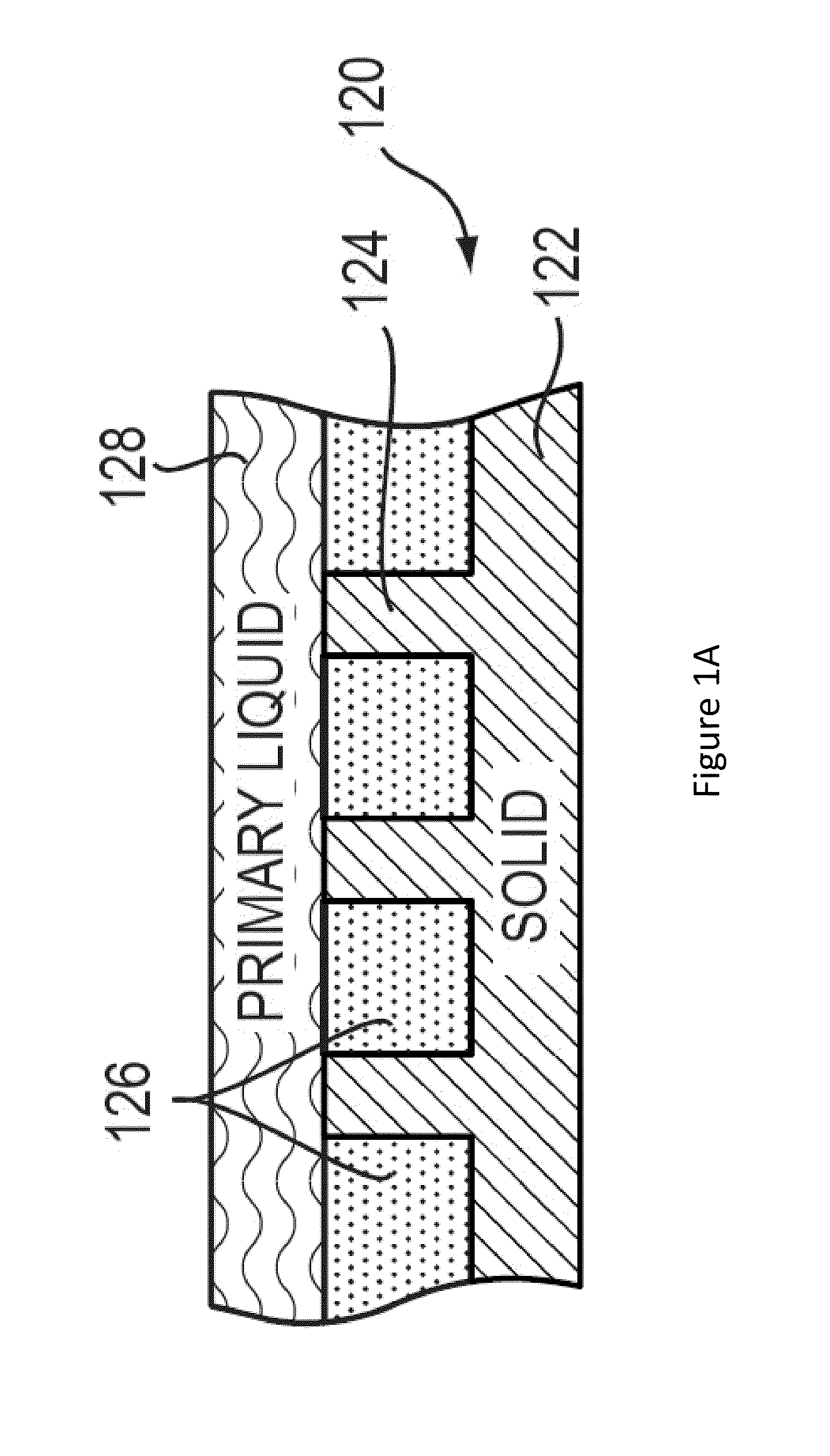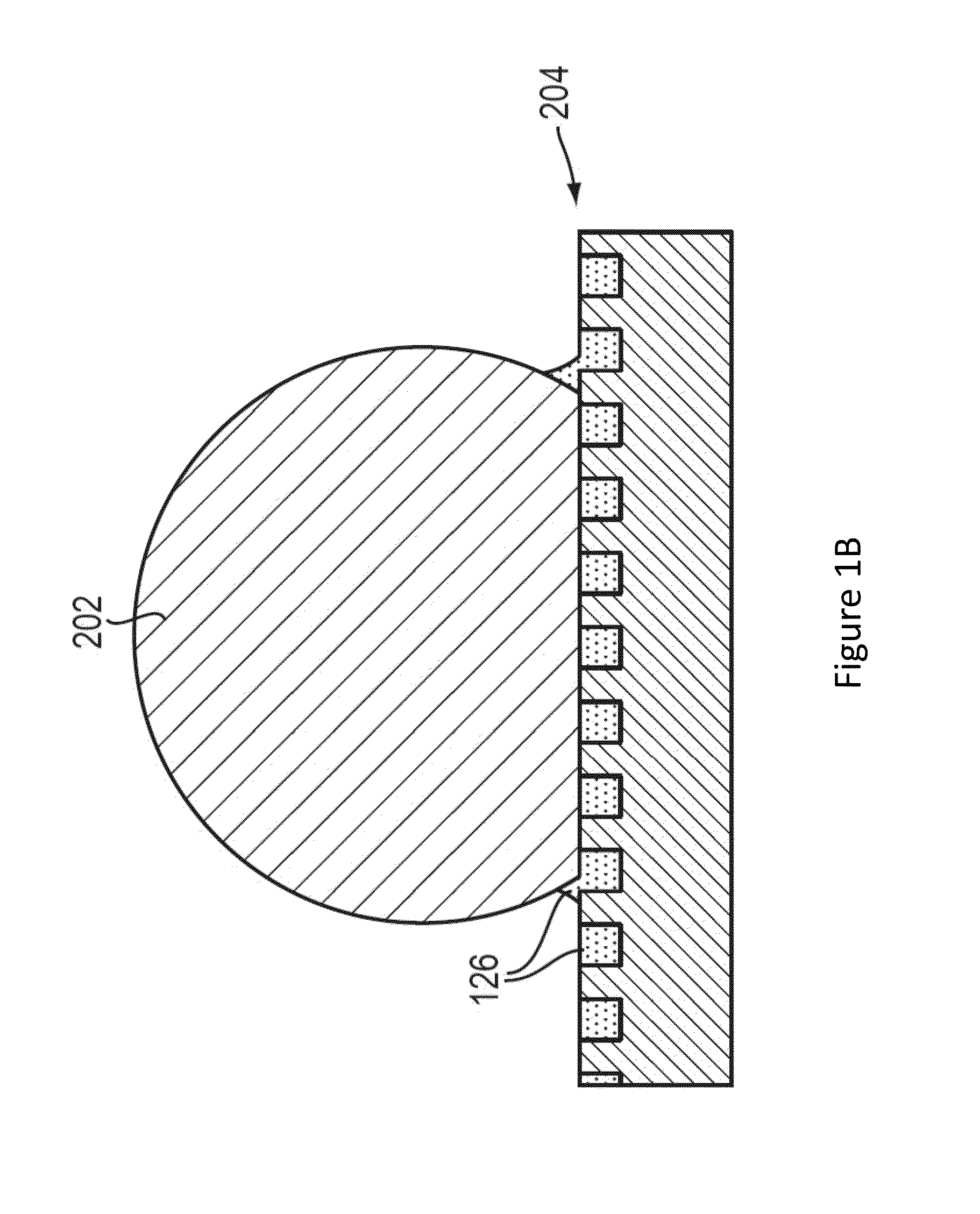Lubricant-impregnated surfaces for electrochemical applications, and devices and systems using same
a technology of lubricant impregnating and electrochemical applications, applied in the field of lubricant impregnating surfaces, can solve the problems of significant pumping energy loss, and/or decrease in electrochemical energy efficiency, and achieve the effect of reducing viscous drag
- Summary
- Abstract
- Description
- Claims
- Application Information
AI Technical Summary
Benefits of technology
Problems solved by technology
Method used
Image
Examples
experimental examples
Example 1
LIS for a Lithium Polysulfide Flow Battery
[0205]This example demonstrates a lithium polysulfide flow battery with a lubricant-impregnated surface (LIS).
[0206]Lithium polysulfide solutions comprising LixSy compounds dissolved in non-aqueous solvents form the basis for flowable catholytes for use in stationary or flow batteries. A representative electrolyte solution was prepared using TEG-DME (≧99%, Sigma-Aldrich), 0.5 M LiTFSI salt (≧99.95%, Sigma-Aldrich), and 1 wt % LiNO3 (ReagentPlus® grade, Sigma-Aldrich). The solution did not include the lithium polysulfide since in electrochemical tests of the lubricant and solvent system, it is necessary to evaluate side reaction currents without interference from the electrochemical couple. To design and select materials for the LIS, several candidate lubricants of various compositions were considered, as listed in Table 1 below.
[0207]Table 1 below illustrates compatibility of several candidate lubricants with the electrolyte solvent...
example 2
Surfaces Designed to be Selectively Wet by the Lubricant
[0218]This example demonstrates exemplary LISs for GIF cells. In GIF cells, lubricants should be prevented from spreading out from the LIS and over a current collector, or infiltrating the porous separator membrane.
[0219]In this example, surfaces designed to be selective to wetting by the lubricant phase of a LIS, silicone oil (10 cSt), were demonstrated. A droplet of silicone oil was placed on certain surfaces to observe whether the silicone oil spreads.
[0220]FIGS. 9A-9E illustrate results showing that surface functionalization can be used to produce surfaces that are wetting and non-wetting to silicone oil. Several surface chemistries are functionalized onto flat polydimethylsiloxane (PDMS) were examined. Un-functionalized PDMS and PDMS functionalized with trichloro(1H,1H,2H,2H-perfluorooctyl)silane were found to prevent silicone oil from spreading (e.g., wetting) in air, as shown in FIGS. 9B and 9C. On the other hand, PDMS f...
PUM
| Property | Measurement | Unit |
|---|---|---|
| Pressure | aaaaa | aaaaa |
| Pressure | aaaaa | aaaaa |
| Angle | aaaaa | aaaaa |
Abstract
Description
Claims
Application Information
 Login to View More
Login to View More - R&D
- Intellectual Property
- Life Sciences
- Materials
- Tech Scout
- Unparalleled Data Quality
- Higher Quality Content
- 60% Fewer Hallucinations
Browse by: Latest US Patents, China's latest patents, Technical Efficacy Thesaurus, Application Domain, Technology Topic, Popular Technical Reports.
© 2025 PatSnap. All rights reserved.Legal|Privacy policy|Modern Slavery Act Transparency Statement|Sitemap|About US| Contact US: help@patsnap.com



